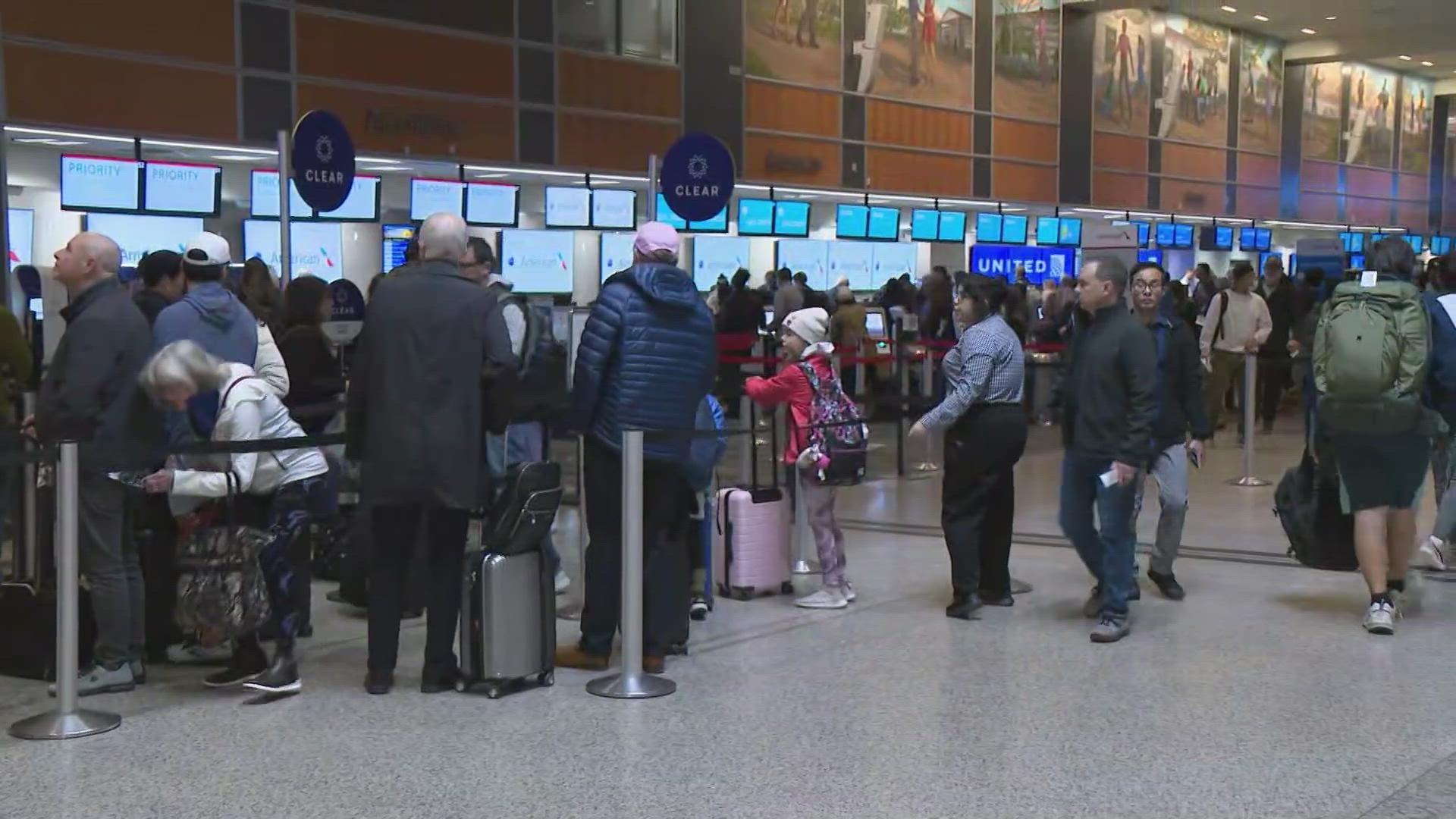AUSTIN, Texas — “People lose their minds when they come to airports.”
That’s how Naashom Marx, director of strategic innovation at Cincinnati/North Kentucky International Airport, put it at Wednesday morning’s South by Southwest (SXSW) conference, “Airports: The Epicenters of the Robot Revolution!”
It’s one problem the panel – made up of Marx, Porsche Consulting’s Joshua Hirschheimer, Team ABC Ventures’ Clyde Hutchinson and A&K Robotics’ Jessica Yip – is looking to solve, using robotics and automation to make the airport experience stress-free.
The SXSW panel addressed how technology can improve how airlines operate, from moving planes on the runway, to baggage, scheduling and worker conditions.
Airports are dealing with an explosion in travel following the end of COVID-19 restrictions. That has brought long lines, staffing shortages, extensive security lines and several airline meltdowns over the past year.
Wednesday’s panel looked at how airports are, in essence, mini cities, with transportation, retail, hospitality, sanitation, “people flows,” accommodation and more.
As Austin’s airport expands with the city’s growth – and will one day connect to mass transit as part of Project Connect – the city now has the opportunity to adopt some of these new technologies. The airport is already bringing in updated technology to improve TSA wait times, with X-ray systems to allow passengers to keep electronics and liquids in bags and a streamlined biometric ID check.
Austin’s airport didn’t not have someone on Wednesday’s panel, but two themes of the talk – safety and sustainability – have particular relevance following an averted crash last month and environmental disagreements over new fuel tank facilities.
Some of the technology airports are adopting to improve runway safety includes automated vehicles, robots that can monitor for birds and robots to remove stones and debris. But Yip suggested a general push toward automation could help ease staffing issues – a cause behind many airport incidents in the past year.
While electrification was a big topic for improving sustainability at airports, Marx brought up another technology that could soon be ready for takeoff – producing jet fuel from garbage. The first such project in the U.S. for this is outside of Reno, Nevada, but “trash talk” is happening across the country as airlines look for ways to become more sustainable. The airline industry is also exploring other alternative fuel options, such as hydrogen made from renewable energy.
Hutchinson, whose investment firm funds news technologies in travel, said many of the most innovative airports in the U.S. are not in cities you might expect – Cincinnati, Pittsburgh and Tampa. Bigger cities are not always willing to take the risks, he said. Austin was not mentioned.
These airports are using automation to improve safety and sustainability but also looking at the traveler experience, from going through security to shopping and food at the gate.
In fact, autonomous robots are now delivering food in the Cincinnati/Northern Kentucky International Airport. Marx said the service is used by “gate huggers” who don’t want to leave the gate to get food, as well as families with young kids.
As Austin’s airport enters the future, it can continue to embrace similar new updates – so we don’t all lose our minds.

